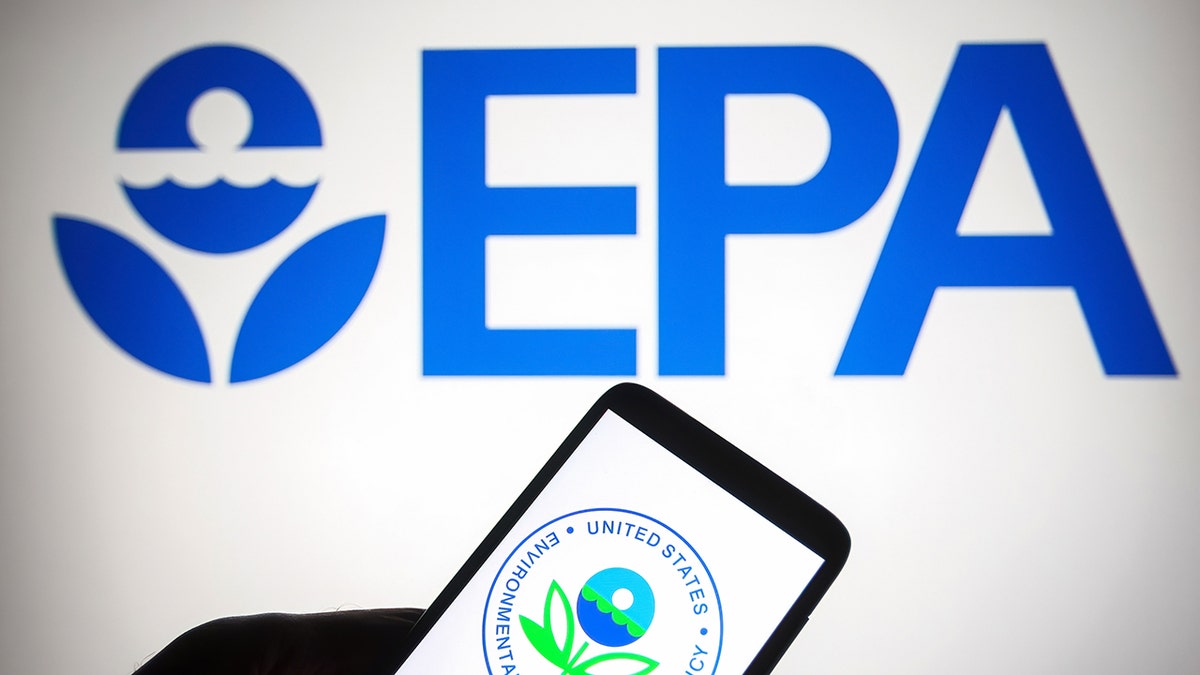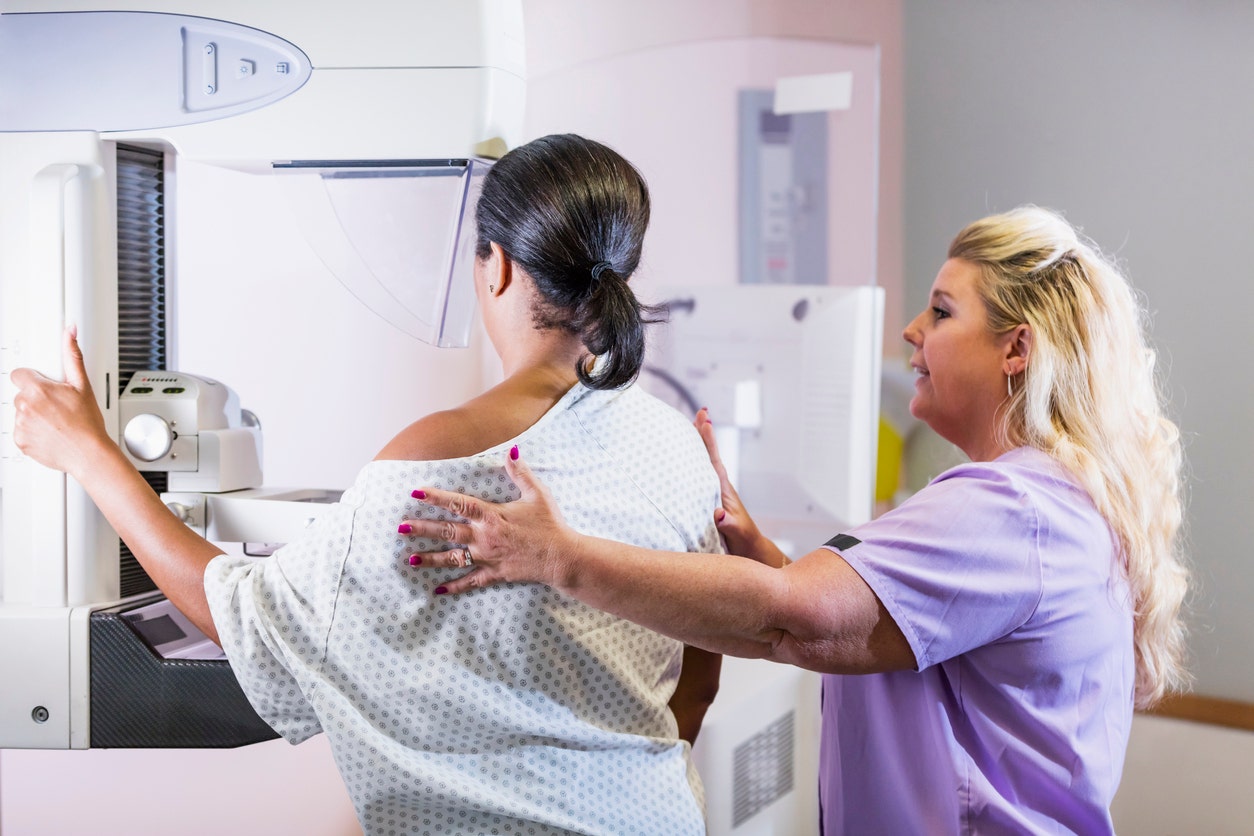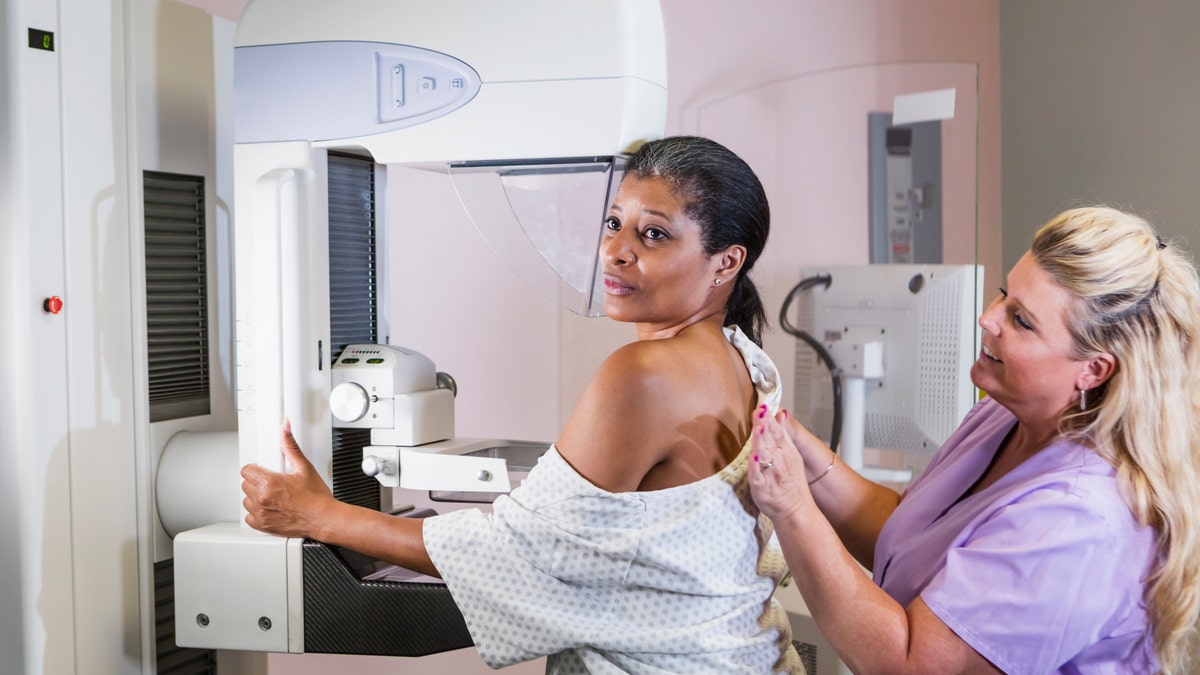Health
'Forever chemicals' found in US drinking water, map shows 'hot spots' of highest levels

The risk of having potentially harmful chemicals in your drinking water may depend on your zip code.
A study published in the journal Nature Geoscience on April 8 found that higher amounts of PFAS (perfluoroalkyl substances) were found in drinking water in certain parts of the U.S.
PFAS — also known as “forever chemicals” due to how slowly they break down — are a group of chemicals used during industrial processes and the manufacturing of consumer products.
SCIENTISTS REVEAL SIMPLE NEW PROCESS THAT MAY HELP ELIMINATE TOXIC CHEMICALS FROM EVERYDAY ITEMS
Two of the main chemicals are perfluorooctanoic acid (PFOA) and perfluorooctane sulfonate (PFOS).
There are many ways people can be exposed to these chemicals — including in drinking water.
A study published in the journal Nature Geoscience on April 8 found that higher amounts of PFAS (perfluoroalkyl substances) were found in drinking water in certain parts of the U.S. (Nature Geoscience)
To determine the prevalence of PFAS in the environment, researchers from the University of New South Wales (UNSW) in Sydney analyzed a global dataset of 273 studies dating back to 2004.
The studies included data for over 12,000 samples of surface water (water that collects on the ground) and more than 33,900 samples of groundwater (water found underground, below the surface).
CHEMICALS IN WATER AND HOUSEHOLD OBJECTS COULD REDUCE CHANCES OF PREGNANCY, LIVE BIRTHS: NEW STUDY
“We looked everywhere for PFAS concentrations in water data, including scientific journals and governmental reports and websites,” Denis O’Carroll, a UNSW engineering professor and senior author of the study, told Fox News Digital.
“We compared PFAS concentrations in these water samples to international regulations. We also compared the types of PFAS analyzed to what we found in consumer products.”

The studies included data for over 12,000 samples of surface water (water that collects on the ground) and more than 33,900 samples of groundwater (water found underground, below the surface). (iStock)
Nearly 70% of the samples had levels of PFAS that exceeded Canada’s minimum safety standards (30 nanograms per liter), while 6% had more chemicals than the European Union’s standard (100 ng per liter), according to the study findings.
In the U.S., PFAS “hot spots” were concentrated in the Midwest, New England and the West Coast, according to a map illustrating the findings — although the chemicals were also detected in other areas across the country.
Globally, Australia, Europe and China showed high levels.
NON-TOXIC CLEANING PRODUCTS TO USE WHILE SPRING CLEANING
“To date, nobody has looked at the global extent of PFAS in our waters and compared it to international drinking water standards,” noted O’Carroll.
“Our study found that a substantial fraction of sampled waters exceeded PFAS drinking water guidance values, with the extent of exceedance depending on the jurisdiction and PFAS source.”
Health risks of PFAS
Dr. Mark Fischer, regional medical director of International SOS, a health and security risk mitigation company headquartered in London, pointed out that most Americans also have these chemicals in their blood.
“Although the use of these chemicals has declined in recent years, they are difficult to break down, so they are still found in some food, water and consumer products, as well as within the soil and the environment,” Fischer, who was not involved in the UNSW study, told Fox News Digital.

Health risks associated with PFAS include cancers, elevated liver enzymes, lower birth weight, heart issues and higher cholesterol. (iStock)
Most people in the U.S. have been exposed to these chemicals, most likely through contaminated food or their drinking water, according to the Centers for Disease Control and Prevention.
Health risks associated with PFAS include cancers, elevated liver enzymes, lower birth weight and higher cholesterol, Fischer said.
“PFAS contamination has been identified in drinking water in all 50 states.”
Other potential dangers include heart issues, plus immune and developmental damage, according to the Environmental Protection Agency (EPA).
“PFAS contamination has been identified in drinking water in all 50 states, according to the Environmental Working Group,” Fischer said.
“That said, the levels of these chemicals vary throughout states and cities.”
Study limitations
The study did have some limitations, the researchers acknowledged.
“We have measured a much wider range of PFAS in consumer products than in our waters,” said O’Carroll.
HATE WATER? HERE ARE 5 HEALTHY ALTERNATIVES, ACCORDING TO AN NFL SPORTS DIETITIAN
“As such, we don’t really have a great idea of the range of PFAS in our waters.”
The data was also limited to what the researchers could find, he noted.
“Just because we can cheaply use a chemical doesn’t mean we should.”
“While we had data for over 45,000 water samples, even more data would be useful, especially for parts of the world where we had limited data.”
The actual amount of PFAS in water could be higher than what the study results imply, O’Carroll added.

Most people in the U.S. have been exposed to PFA chemicals, most likely through contaminated food or their drinking water, according to the Centers for Disease Control and Prevention. (iStock)
“Current monitoring practices probably underestimate PFAS in the environment, given the limited suite of PFAS that are typically quantified but deemed of regulatory concern,” he said.
These are just one of the many types of chemicals that are used in daily life, O’Carroll noted.
“As a society, we need to consider the chemicals we use and reduce our use of some,” he advised.
“Just because we can cheaply use a chemical doesn’t mean we should.”
Latest PFAS regulations
On April 10, the EPA finalized new limits on the amount of PFAS permitted in drinking water.
The new standards could reduce exposure for 100 million people, potentially preventing thousands of deaths and tens of thousands of serious illnesses, the agency said in a news release.

On April 10, the EPA finalized new limits on the amount of PFAS permitted in drinking water. (Pavlo Gonchar/SOPA Images/LightRocket via Getty Images)
This is the “first-ever national, legally enforceable drinking water standard” to protect people from the health risks of PFAS, the agency stated.
The 66,000 public drinking water systems in the U.S. will have three years to reduce PFAS levels to meet the new standards, according to the release.
CLICK HERE TO SIGN UP FOR OUR HEALTH NEWSLETTER
The EPA also announced $1 billion in new funding, provided through the Bipartisan Infrastructure Law, to enable PFAS testing and treatment of public water systems and private wells.
Fox News Digital reached out to the EPA and the American Water Works Association for comment.
For more Health articles, visit foxnews.com/health

Health
Breast cancer mammogram screenings should start at age 40 instead of 50, says health task force

Women should get mammograms every other year starting at age 40, according to updated recommendations from the U.S. Preventive Services Task Force (USPSTF).
This is a significant change from previous guidelines, which said women should begin biennial mammograms at age 50, but could opt to begin as young as 40.
The task force also noted that there is not sufficient evidence to “assess the balance of benefits and harms” of additional breast cancer screenings — including ultrasounds and MRIs — for women with dense breast tissue who have had an otherwise negative screening mammogram.
SOME BREAST CANCER PATIENTS COULD BE AT RISK OF ANOTHER TYPE OF CANCER, STUDY REVEALS
The USPSTF previously released these recommendations in draft form in May 2023.
Tuesday’s announcement makes the guidance official.
Women should get mammograms every other year starting at age 40, according to updated recommendations from the U.S. Preventive Services Task Force. (iStock)
Other medical groups have already been recommending mammograms starting at younger ages.
The American College of Radiology recommends starting annual screenings at age 40 for women of average risk, with earlier screenings for high-risk patients.
The American Cancer Society states that women between 40 and 44 have the option to get annual mammograms, and officially recommends that women between 45 and 54 get them every year.
ICE THERAPY SHOWN TO KILL BREAST CANCER TUMORS IN NEW STUDY: ‘IMPORTANT TECHNIQUE’
The updated guidance is in response to cancer rates rising among young people and breast cancer rates rising in particular, experts say.
Between 1990 and 2019, cancer rates among people 50 and younger have risen by 79%, according to research published in BMJ Oncology.

The previous guidance stated women should begin biennial mammograms at age 50, but could opt to begin as young as 40. (iStock)
Cancer rates for people under 50 are projected to rise by 31% by the year 2030, data shows.
Breast cancer is the second leading cause of cancer death in women, according to the American Cancer Society, with rates rising 2% each year since 2015.
AN OVERVIEW OF BREAST CANCER, SYMPTOMS TO LOOK OUT FOR, WHEN TO START THINKING ABOUT ROUTINE SCREENINGS
One in eight women will develop breast cancer in their lifetime, and each woman has a one in 40 chance of dying from the disease.
The earlier screening recommendation could save 19% more lives, the USPSTS stated.

Breast cancer is the second leading cause of cancer death in women, according to the American Cancer Society. (iStock)
Reactions to the recommendation
Dr. Michelle Specht, a breast surgeon and co-director of the Avon Comprehensive Breast Evaluation Center at Mass General Cancer Center, said she is “thrilled” that the USPSTF has finalized its recommendations for earlier screenings.
“We have seen a rise in the incidence of breast cancer in women in their 40s over the last eight years and know that starting mammography at 40 will allow us to detect cancers at a smaller size and earlier stage,” she told Fox News Digital.
“Early detection not only leads to improved survival, but an improved quality of life. As a surgeon, I am able to do smaller surgeries — and my medical oncology colleagues can deescalate treatment — when cancers are detected early.”

One in eight women will develop breast cancer in their lifetime, and each woman has a one in 40 chance of dying from the disease. (iStock)
Dr. Karen Knudsen, CEO of the American Cancer Society in Virginia, said in a statement the decision is a “critical change concerning women’s health and the fight against breast cancer,” and that it sends “a strong message to referring physicians and women that breast cancer screening should begin earlier than age 50.”
“Mammography screening is the cornerstone of our strategy to find this potentially deadly disease early, when it’s easier to treat successfully,” she said in the statement.

“Mammography screening is the cornerstone of our strategy to find this potentially deadly disease early, when it’s easier to treat successfully,” said the CEO of the American Cancer Society. (iStock)
“We are encouraged that among the reasons for the USPSTF changes in their breast cancer screening recommendations include eliminating health disparities, especially among Black women, who are 40% more likely to die of breast cancer compared with White women and have a higher risk of aggressive breast cancers at all ages,” Knudsen added.
CLICK HERE TO SIGN UP FOR OUR HEALTH NEWSLETTER
Dr. Nancy Chan, a medical oncologist at NYU Langone Perlmutter Cancer Center, shared her reaction to the updated guidelines.
“No significant difference was found in different screening methods, i.e., DBT (digital breast tomosynthesis) versus digital mammogram,” she told Fox News Digital.
“In patients with dense breast tissue, the addition of MRI may reduce cancer risk and false positive recalls.”

If a woman has a family history of breast cancer, she should meet with her doctor to have a breast cancer risk analysis performed, a doctor said. (iStock)
In clinical practice, Chan said the majority of patients undergo annual screenings with mammograms, instead of once every two years.
“Practically, in the urban setting, most patients are already and will continue to have screening with mammogram with tomosynthesis (3D mammography),” she added.
“Each patient must consider the best screening method for their individual cancer risk, such as breast density and family history.”
If a woman has a family history of breast cancer, she should meet with her doctor to have a breast cancer risk analysis performed, Specht said.
“This risk analysis will allow their physician to tailor breast cancer screening,” she noted.
“A woman at high risk of developing breast cancer may begin prior to 40 and may do both mammograms every year, [along with] supplemental screening, such as a breast MRI.”
For more Health articles, visit www.foxnews.com/health.
Health
US health experts recommend less alcohol as new research challenges benefits of moderate drinking

- Global drinking guidelines are shifting towards recommending less alcohol consumption.
- More than 200 health conditions have been linked to alcohol, according to the World Health Organization.
- Genetic studies show that people with a gene variant making alcohol unpleasant tend to have lower heart disease risks.
It’s wine time. Beer Thirty. Happy hour. Five o’clock somewhere.
Maybe it’s also time to rethink drinking?
Moderate drinking was once thought to have benefits for the heart, but better research methods have thrown cold water on that.
WOMEN WHO DRINK MORE THAN 8 ALCOHOLIC BEVERAGES A WEEK ARE AT GREATER RISK OF HEART DISEASE: NEW STUDY
“Drinking less is a great way to be healthier,” said Dr. Timothy Naimi, who directs the Canadian Institute for Substance Use Research at the University of Victoria in British Columbia.
Bottles of alcohol sit on shelves at a bar in Houston on June 23, 2020. Moderate drinking was once thought to have benefits for the heart, but better research methods starting in the 2010s have thrown cold water on that. (AP Photo/David J. Phillip, File)
ARE DRINKING GUIDELINES CHANGING?
Guidelines vary a lot from country to country but the overall trend is toward drinking less.
The United Kingdom, France, Denmark, Holland and Australia recently reviewed new evidence and lowered their alcohol consumption recommendations. Ireland will require cancer warning labels on alcohol starting in 2026.
“The scientific consensus has shifted due to the overwhelming evidence linking alcohol to over 200 health conditions, including cancers, cardiovascular diseases and injuries,” said Carina Ferreira-Borges, regional adviser for alcohol at the World Health Organization regional office for Europe.
From Dry January to Sober October to bartenders getting creative with non-alcoholic cocktails, there’s a cultural vibe that supports cutting back.
“People my age are way more accepting of it,” said Tessa Weber, 28, of Austin, Texas. She stopped drinking for Dry January this year because she’d noticed alcohol was increasing her anxiety. She liked the results — better sleep, more energy — and has stuck with it.
“It’s good to reevaluate your relationship with alcohol,” Weber said.
WAIT, MODERATE DRINKING DOESN’T HAVE HEALTH BENEFITS?
That idea came from imperfect studies comparing groups of people by how much they drink. Usually, consumption was measured at one point in time. And none of the studies randomly assigned people to drink or not drink, so they couldn’t prove cause and effect.
People who report drinking moderately tend to have higher levels of education, higher incomes and better access to health care, Naimi said.
“It turns out that when you adjust for those things, the benefits tend to disappear,” he said.
DRINKING ALCOHOL WEEKLY COULD BE CONNECTED TO 61 DIFFERENT DISEASES, STUDY FINDS
Another problem: Most studies didn’t include younger people. Almost half of the people who die from alcohol-related causes die before the age of 50.
“If you’re studying people who survived into middle age, didn’t quit drinking because of a problem and didn’t become a heavy drinker, that’s a very select group,” Naimi said. “It creates an appearance of a benefit for moderate drinkers that is actually a statistical illusion.”
Other studies challenge the idea that alcohol has benefits. These studies compare people with a gene variant that makes it unpleasant to drink to people without the gene variant. People with the variant tend to drink very little or not at all. One of these studies found people with the gene variant have a lower risk of heart disease — another blow to the idea that alcohol protects people from heart problems.
HOW MANY DRINKS CAN I HAVE PER DAY?
That depends.
Drinking raises the risk of several types of cancer, including colon, liver, breast and mouth and throat. Alcohol breaks down in the body into a substance called acetaldehyde, which can damage your cells and stop them from repairing themselves. That creates the conditions for cancer to grow.
Thousands of U.S. deaths per year could be prevented if people followed the government’s dietary guidelines, which advise men to limit themselves to two drinks or fewer per day and women to one drink or fewer per day, Naimi said.
One drink is the equivalent of about one 12-ounce can of beer, a 5-ounce glass of wine or a shot of liquor.
Naimi served on an advisory committee that wanted to lower the recommendation for men to one drink per day. That advice was considered and rejected when the federal recommendations came out in 2020.
“The simple message that’s best supported by the evidence is that, if you drink, less is better when it comes to health,” Naimi said.
Health
Highest Paying Work-From-Home Jobs: 5 Ways to Earn | Woman's World

Sign Up
Create a free account to access exclusive content, play games, solve puzzles, test your pop-culture knowledge and receive special offers.
Already have an account? Login
Forgot your password?
Get back to the Sign In
Use left and right arrow keys to navigate between menu items.
Use escape to exit the menu.
-

 Education1 week ago
Education1 week agoVideo: Dozens of Yale Students Arrested as Campus Protests Spread
-

 World1 week ago
World1 week agoEU sanctions extremist Israeli settlers over violence in the West Bank
-

 World1 week ago
World1 week agoShipping firms plead for UN help amid escalating Middle East conflict
-

 Politics1 week ago
Politics1 week ago'Nothing more backwards' than US funding Ukraine border security but not our own, conservatives say
-

 Politics1 week ago
Politics1 week agoDemocrats hold major 2024 advantage as House Republicans face further chaos, division
-

 Politics1 week ago
Politics1 week agoFetterman hammers 'a–hole' anti-Israel protesters, slams own party for response to Iranian attack: 'Crazy'
-

 World1 week ago
World1 week agoPeriod poverty still a problem within the EU despite tax breaks
-

 Politics1 week ago
Politics1 week agoA battle over 100 words: Judge tentatively siding with California AG over students' gender identification




:quality(70)/cloudfront-us-east-1.images.arcpublishing.com/adn/7VBZBDHXBZGLXE5QKLPMAOECCM.jpg)










